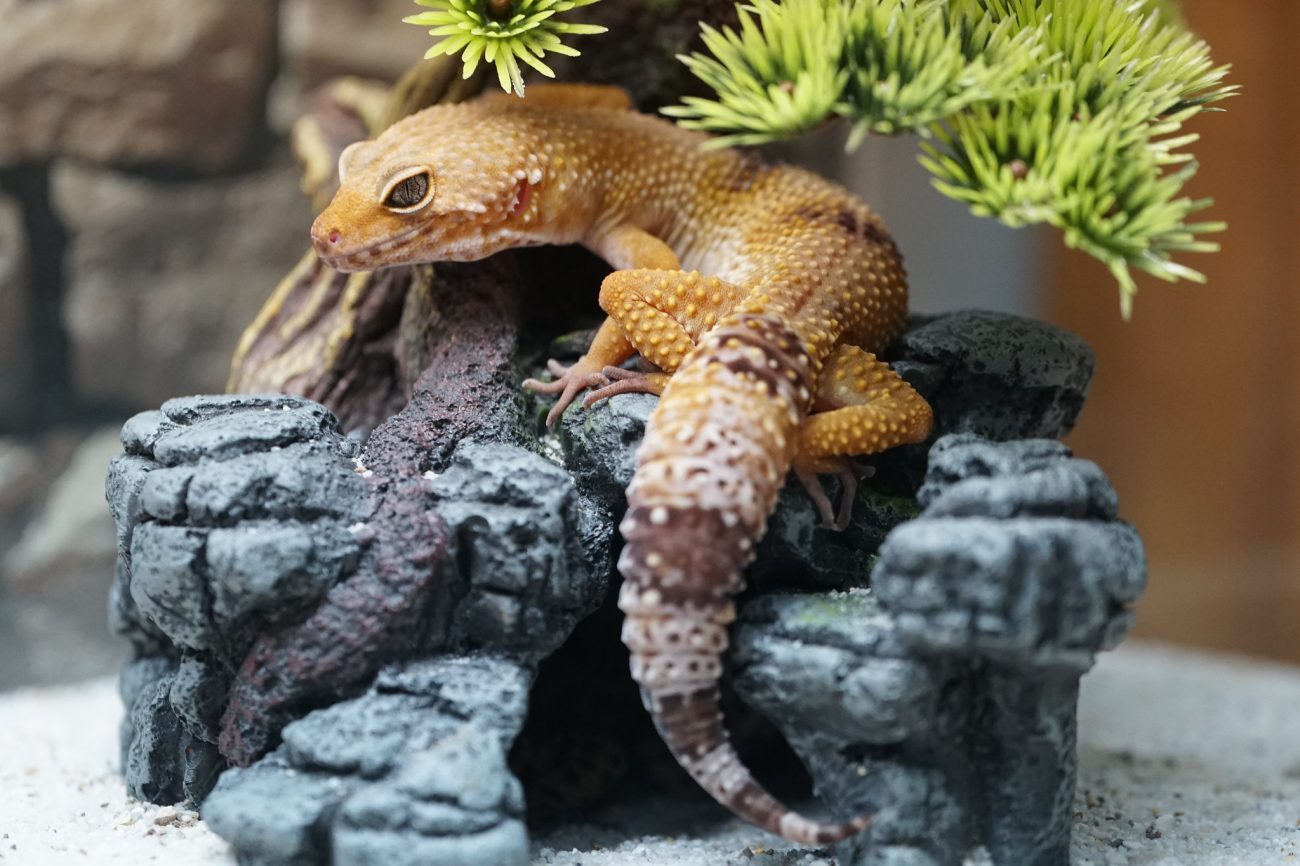Leopard geckos are known for their cute smiles and gentle nature, but did you know they have a secret survival trick? They can intentionally drop their tails to escape predators! If this happens to your pet gecko, it’s important to understand why, how to care for them afterward, and how to prevent future tail drops.
In this guide, I will teach you about the remarkable world of gecko tail regeneration, giving you the knowledge to help your scaly friend through this unusual experience.
Why Do Leopard Geckos Drop Their Tail?
Leopard geckos have a fascinating ability to drop their tails at will. This sounds strange initially, but these lizards developed this useful behavior as a defense mechanism against predators.
There are a few reasons why they might employ this tactic.
Natural Defense Mechanism
Leopard geckos are relatively small lizards, which can make them easy targets for predators in the wild. They have a clever trick up their sleeves – or on their tails!
When a predator grabs a leopard gecko by the tail, the lizard can detach it as a distraction. The tail continues to wiggle and twitch (for up to 30 minutes), confusing the predator while the gecko makes a quick getaway.
Stress-induced Response
Even when leopard geckos are kept as pets, their instinct to drop their tail remains strong. Although pet geckos may not face hungry predators, they can get stressed when:
- Feeling Threatened: A curious cat, a playful dog, or even an aggressive tankmate can leave your gecko feeling like it’s under attack. This triggers aserious stressresponse.
- Improper Handling: We all want to bond with our geckos, but they have their own schedules. Being handled when they’re not in the mood can cause panic. Young geckos might drop their tails if they feel very scared.
- Startled or Surprised? I’m sure you’ve seen how fast these little guys can be! That skittishness comes from being alert to danger. Loud noises or sudden movements can trigger their fear response, even if we mean no harm.
- Uncomfortable Living Conditions: Like with any pet, If something isn’t quite right in their enclosure – temperature, humidity, or light – geckos can feel on edge, and this constant stress can potentially lead to tail dropping.
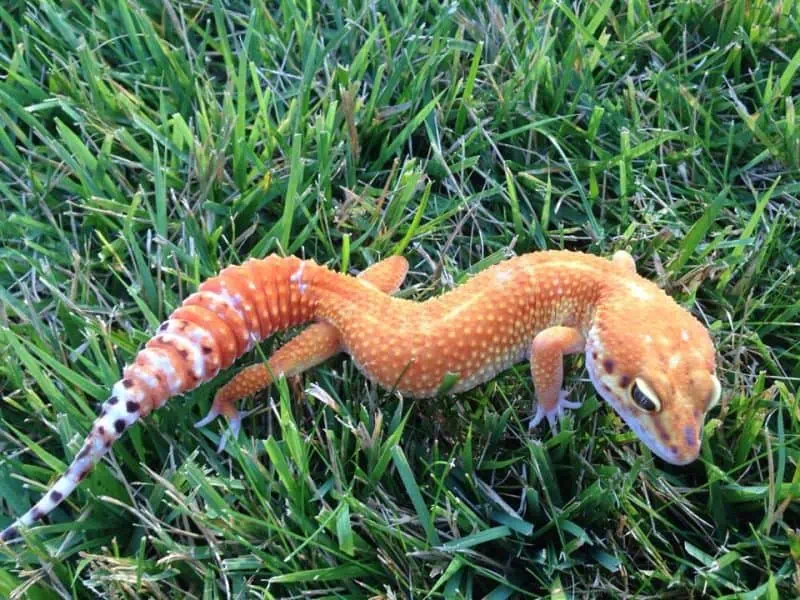
Getting Stuck
Sometimes, situations may feel hopeless for your gecko. If a gecko’s tail gets trapped in its enclosure (like under a heavy rock), they possess an amazing survival mechanism. Your gecko may decide that losing its tail is the best way to get free. This is called autotomy, or “self-amputation“.
Illness or Infection
Your gecko’s health also plays a role in tail dropping. If your gecko has a bacterial or fungal infection or if a wound becomes infected. It may lead to tail dropping. This attempts to stop the infection from spreading to the rest of the body. While less common, seeing a veterinarian is important if you suspect this is the cause.
What is the Autotomy Process
Let’s understand how the process of tail-dropping works from a biological standpoint:
- Role of Fracture Planes: Think of a gecko’s tail as having built-in “breakaway points” called fracture planes. These are areas along the tail where the bones, muscles, and tissues are designed to separate easily. This means a gecko can intentionally detach a portion of its tail with minimal force, leaving a predator with just a wiggling distraction.
- Hormonal Triggers: When a gecko feels seriously threatened, it triggers a surge of hormones. These hormones cause the muscles around a specific fracture plane to contract powerfully. This sudden, forceful tightening snaps the tail off cleanly. At the same time, the blood vessels near that area constrict, minimizing blood loss.
What Do You Do When Your Leopard Gecko Drops Its Tail?
Okay, let’s not panic! A leopard gecko’s tail usually grows back. But right now, your gecko needs special care to ensure it recovers properly.
Immediate Actions
Your gecko’s probably feeling stressed after such a big event. So, be calm and handle your little friend very gently. If there are other geckos in the tank, it’s best to separate your gecko for a while. An exposed tail stump could be tempting to tankmates and cause more problems.
Creating a Stress-Free Environment
Time to focus on creating a healing haven! Double-check that your gecko’s home has the right temperature and humidity – these are super important for healthy recovery. Getting these wrong can stress your gecko and slow down healing.
It’s also a good idea to watch for any signs of illness. Sometimes, tail drops can indicate something else isn’t quite right.
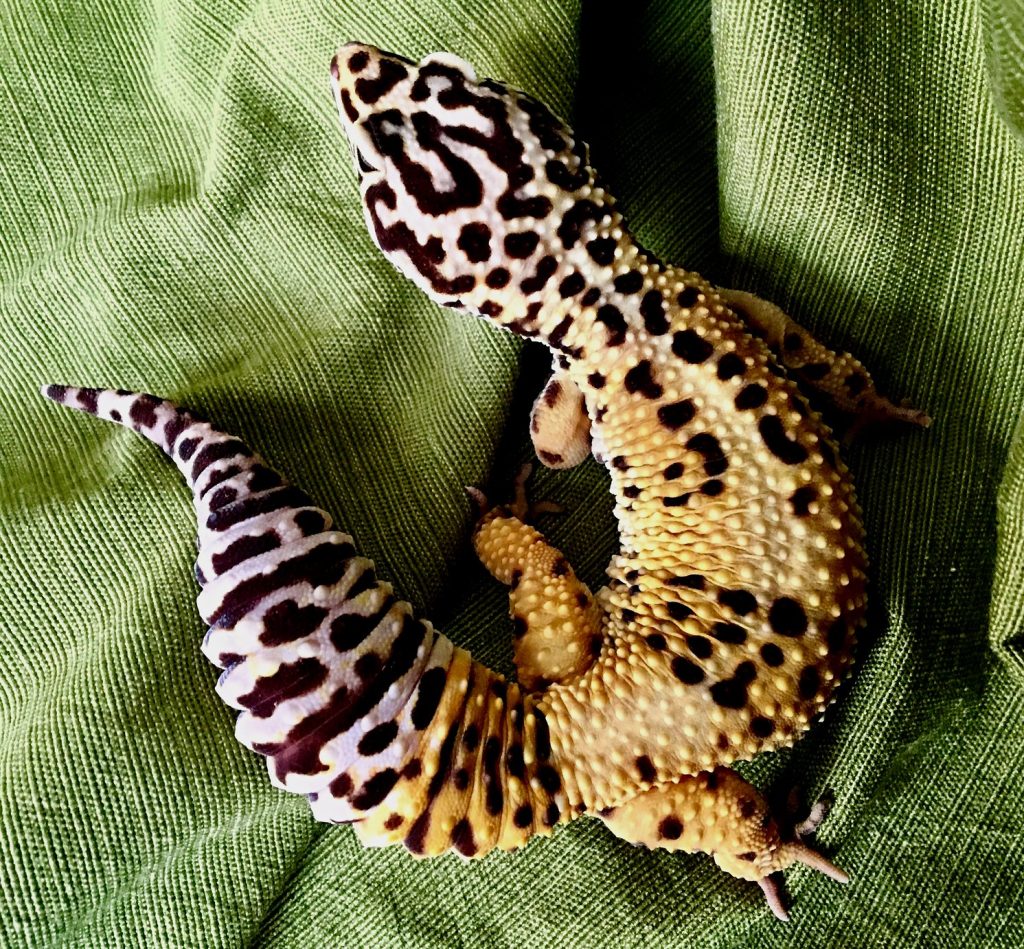
How Do You Care After Your Leopard Gecko Drops Its Tail?
After the initial tail drop, it’s important to understand the proper care for your gecko to ensure a smooth recovery. Let me walk you through it:
Keeping the Wound Clean
First, removethe regular bedding like sand, wood chips, or anything loose – it all has to go. Imagine getting that in a cut? That will cause infection! Paper towels are your gecko’s best friend right now because they are easy to clean and nothing to get stuck in the wound.
I recommend gently cleaning the area with warm water and a diluted, reptile-safe antiseptic like Betadine to protect against infection – this solution is amazing for keeping germs away.
Avoiding Infection
Keep a close eye on that tail stump. Any redness, swelling, or weird discharge? Time to call your reptile vet. And while we’re talking about cleanliness – their home needs extra care during this time. Freshwater, frequent cleaning, and disinfection are must – the more we reduce bacteria, the faster they heal.
Adjusting Feeding
Your gecko might not be super hungry initially – losing their tail is stressful! Offer softer foods, maybe a little extra, to help them rebuild those fat stores. For example, with mashed insects or a commercial gecko diet, you can slightly increase the food offered.
But remember – remove any extra food after 15 minutes because we don’t want bugs bothering the wound.
Handle with Care
I know you love giving your gecko attention, but they need to rest right now. The less stress they have, the better they’ll heal. If you have other geckos, it might be best to give your injured friend a little “me time” in a separate, comfy setup.
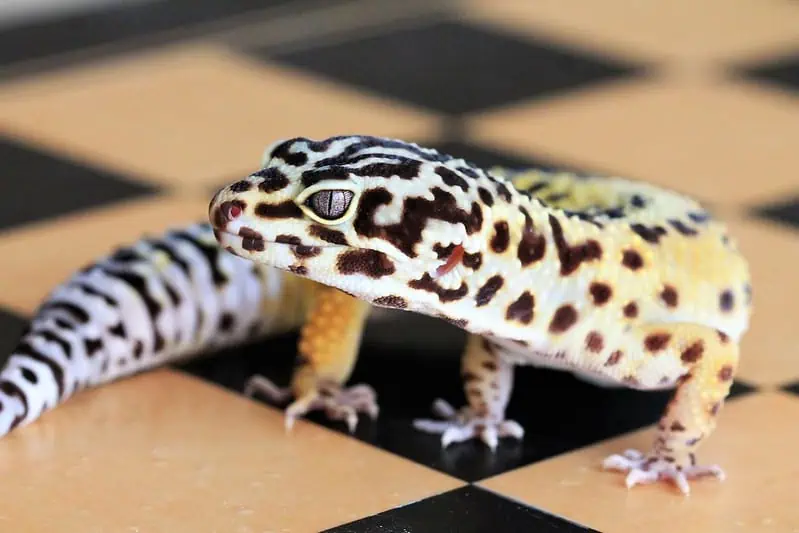
How Long Does It Take to Grow Back?
It typically takes a leopard gecko about 30-60 days to fully regrow a lost tail. Every gecko is different though, so don’t be surprised if yours needs a bit more (or less!) time.
Here’s what you can usually expect:
- Wound Closure: Within the first 3-4 weeks, you’ll see the tail stump heal over. A thin layer of skin will form to protect the area.
- Tail Regeneration Begins: After the wound heals, the real magic starts! A new tail will begin to grow. This process typically takes another month or so.
- Complete Regrowth: Generally, you can expect your gecko to have a fully formed new tail within roughly 60 days of the initial tail drop.
But remember, every gecko is unique! Some take a little longer – don’t worry if yours needs a few extra months to regrow their tails. The best thing you can do is provide your gecko with a healthy, nutritious diet that will give their body the resources it needs for a speedy recovery.!
How Many Times Can a Leopard Gecko Lose Its Tail?
You might be surprised to learn that, unlike some other lizard species, leopard geckos can lose and regrow their tails multiple times. I’ve seen geckos come into my clinic after regrowing their tails several times!
There’s no specific limit on how many times this can happen. While younger leopard geckos bounce back relatively quickly, but it gets tougher as they age. The process takes a lot of energy, and an older gecko might struggle to regrow a tail, taking longer than before.
In some cases, a senior leopard gecko might even lose the ability to regrow its tail entirely, remaining tailless for the rest of its life.
While this ability is fascinating, there are a few important things every gecko owner should know:
Important Things to Note:
- Tail regeneration is not guaranteed: Even though leopard geckos have this ability, there’s no guarantee a lost tail will regrow successfully.
- Tail loss is stressful: While a helpful defense mechanism, losing a tail is a stressful event for a gecko. I always recommend giving them extra care and quiet during the regeneration process.
Preventive Measures
To minimize the chances of your gecko dropping its tail again, it’s important to take preventative action. Here’s how to create a stress-free environment for your lizard friend:
Proper tank setup
Your gecko’s home needs to be the right size and have the perfect temperature, the correct amount of light, and proper humidity. A clean environment with no sharp objects is a must. A hiding spot in their enclosure is essential for them to feel safe.
If the habitat is in a busy part of your house, a visual barrier might make it more secure. Beyond the basics, there are many ways to enrich your gecko’s environment to boost their overall happiness and well-being.
Gentle Handling
Never, ever grab a gecko by its tail! Always pick up a lizard with one gentle hand under the belly and the other behind its front legs for support. And, make sure everyone who may interact with the lizard learns how to handle them safely.
Know What’s Normal, Know What’s Not
Is your gecko refusing food or eating less than usual? This could be stress or illness. Normally active geckos shouldn’t be sluggish. If yours is hiding all the time, it may not be feeling its best. A healthy gecko has a plump tail. If it’s getting thin, there’s likely a problem.
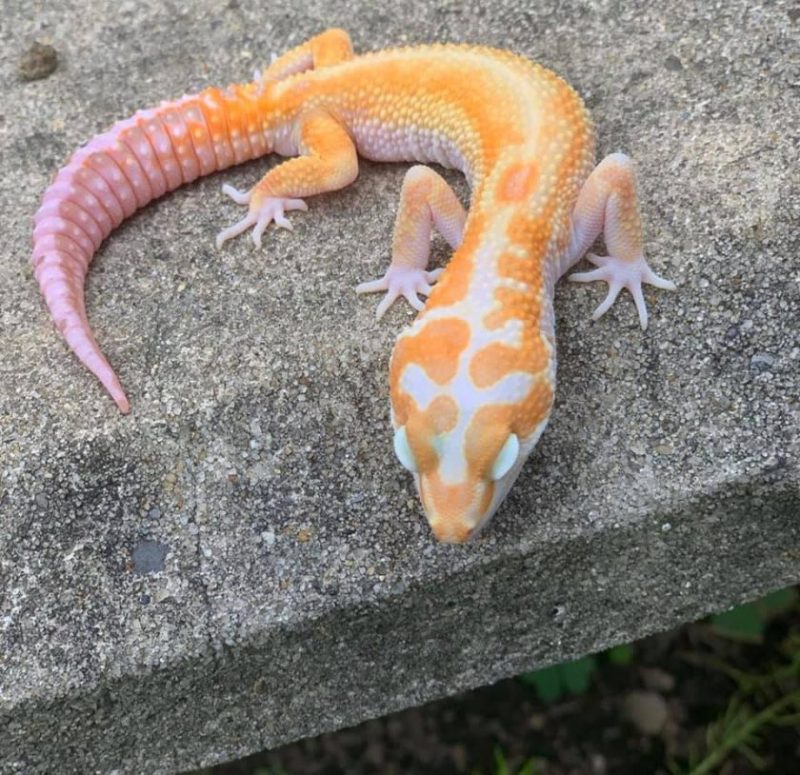
Your Partner in Gecko Health: The Reptile Vet
A veterinarian specializing in reptiles is your best ally. Regular checkups help catch problems early and provide peace of mind.
Final Thoughts
It’s wild that leopard geckos can just drop their tails to escape danger! That’s an amazing survival skill. It might freak us out a little as owners, but it’s important to remember that it’s totally natural and they evolved to do this.
If we understand why they drop tails, keep their lives stress-free, and give them excellent care, it helps them stay happy and healthy. The goal is for them to never feel the need to use this escape trick!
Has your gecko ever dropped its tail? How did it make you feel? Did it make you worry? Let’s drop our experiences in the comments – sharing stories always helps us become better gecko parents!
Featured Image Photo Credit – phil1401

